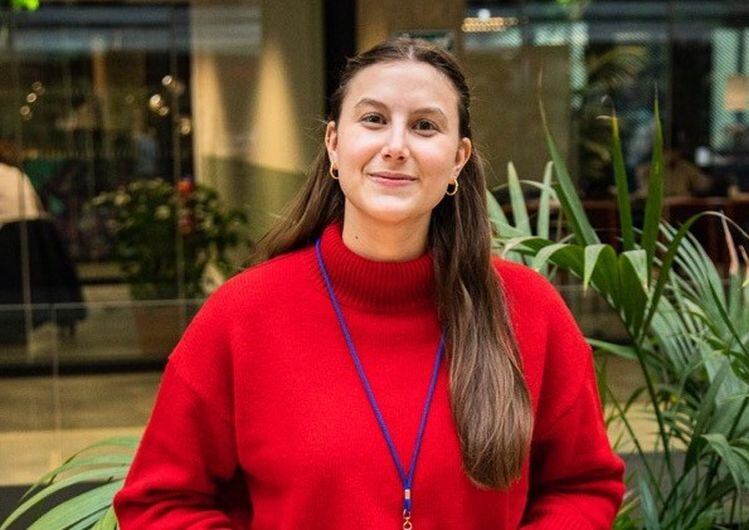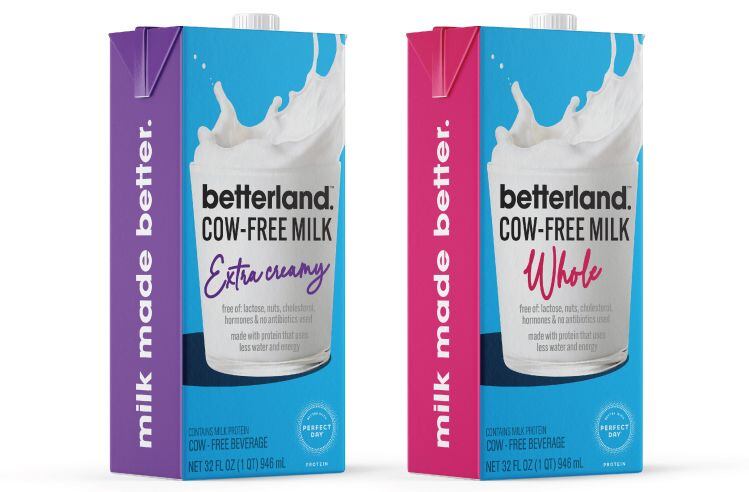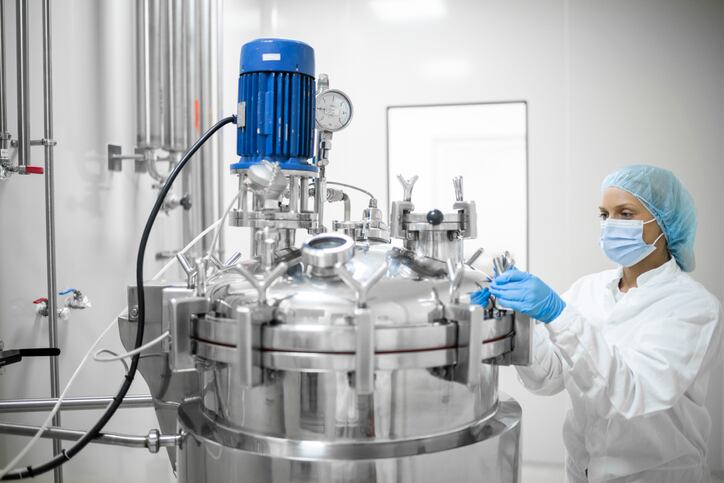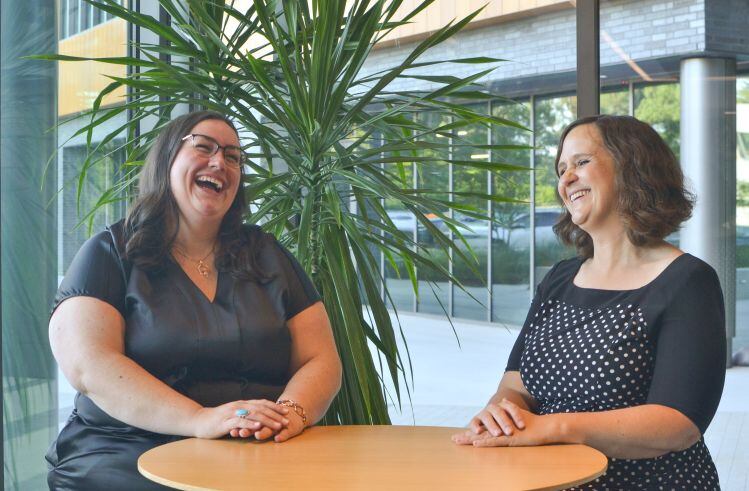Producing cow’s milk - or something pretty close to it - without animals, has to be worth a shot, argues Côté, although she acknowledges that startups in the space have yet to prove the technology can be scaled to compete with such a commoditized pantry staple.
While some players in this nascent field (such as NC-based BIOMILQ), are focusing on human milk in order to access high-value infant formula markets for Moms that can’t breastfeed but want to give their babies something more closely approximating breastmilk than standard infant formula, Montreal-based Opalia (formerly Bettermilk) is squarely targeting the milk we all have in our fridge, says Côté, who teamed up with co-founder and CTO Lucas House to start exploring cell-cultured milk in late 2020.
“The reason we're focusing on cow’s milk instead of human [milk] is because… that's where the value is in terms of impact. The reason we got into this business is for the whole sustainability and animal welfare aspect. This is what is driving us forward and pushing us to be aggressive on reducing our production costs early to target these lower-margin products that are part of a bigger market."
Cell cultured milk and meat are somewhat different propositions
So how does it work?
In a nutshell, Opalia is taking cells from bovine mammary epithelial cells, feeding them nutrients to get them to proliferate, and then triggering them to differentiate and start producing milk, explained Côté, who says Opalia has "solid IP around our mammary cell line."
Unlike cell-cultured meat - where the cells themselves are the end product, and manufacturers will have to work out how to grow and feed billions of cells cost effectively – Opalia’s cells are mini factories that churn out milk.
Similarly, it doesn't have to worry about tissue, scaffolding, or handling multiple different cell types as the meat players do, while the regulatory pathway may also be simpler than it is for cell-cultured meat, speculated Côté, who was speaking to FoodNavigator-USA after announcing the elimination of fetal bovine serum (FBS) from Opalia’s manufacturing process.
Going FBS-free is significant both on ethical grounds - given that it defeats the purpose of producing milk outside of an animal if you need animal-derived components to produce it - and economic grounds, said Côté, who noted that FBS is “costly and subject to high levels of batch-to-batch variation that decreases its reliability.”
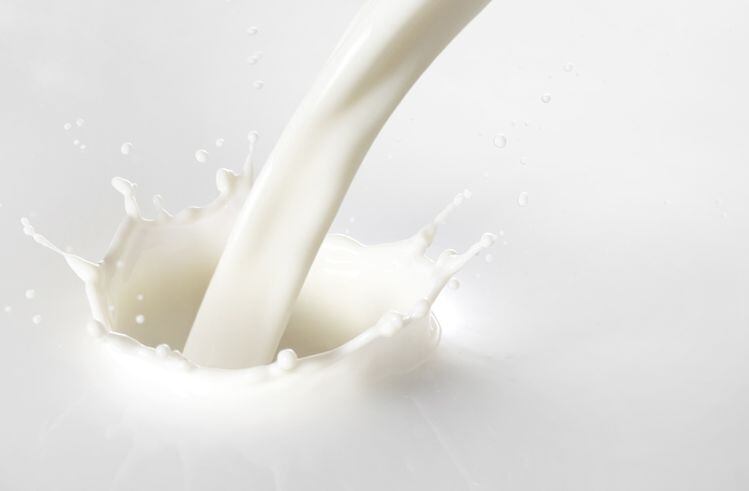
Cell culture media
For cell-cultured milk production, there are two phases, she explained. The first is a growing phase where the aim is to get the animal cells to proliferate, “so this is kind of a nurturing phase where you have amino acid, vitamins, sugars, and salts, and we also have our animal-free FBS replacement that we have to add for stimulating growth. And then once the cells are grown to the numbers we want, we remove the FBS alternative, and we add in the components that induce lactation [phase two].
“And those components [which Opalia is not disclosing] are a key part of our IP as they allow us to increase lactation and also to reduce the cost, which is always the key factor to keep in mind for scalability.”
‘It’s not bio-identical to cow’s milk…’
But how close is Opalia’s ‘milk’ to the real thing, and how does it compare to, say, Betterland Foods’ new ‘cow-free’ milk, which features whey protein produced via microbial fermentation, and is billed as "virtually indistinguishable" from cow's milk from a functional perspective?
Opalia's milk is “not bio-identical to cow’s milk,” clarified Côté, who has raised around $1m in pre-seed funding from backers including Big Idea Ventures, Sustainable Food Ventures, and CULT Food Science, and is now seeking funding for a seed round.
But it’s significantly closer to it than plant-based milk, or next-generation products such as Betterland milk, which is closer to cow's milk than say, almondmilk, but still only contains one dairy component (beta lactoglobulin), said Côté. “At Opalia, we can manufacture all of the functional components of traditional dairy: all four casein proteins, both whey proteins, milk fats, and milk sugar.
"When making whole milk, there is an interaction between these components that give them their functional quality. This interaction is something that is very hard to replicate when producing individual components in an organism that is not a mammary gland cell."
She added: “The market we're targeting is really in the food side of things, so for us, it's less about being able to produce immunoglobulins or other immunity components, because you don't need these components to make a good cheese, so it's really more about the proteins, fats and sugars.”
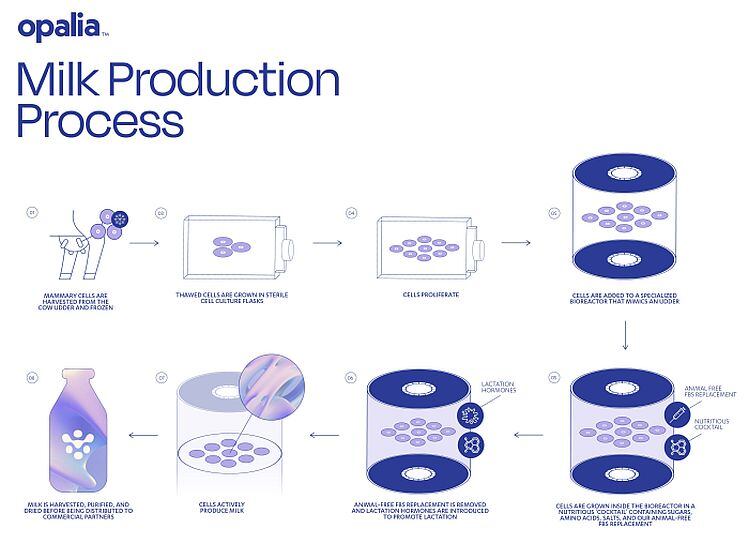
‘It still feels like magic a little bit…’
As for the business model, it’s early days for Opalia, which is still very much in the R&D phase, said Côté, but the aim is to “partner with companies who use milk in their products to target a wide range of applications from food, to cosmetics and pharmaceuticals.”
Stepping back, Côté is under no illusions about the challenge facing firms in the cell-cultured milk and meat arena - with some commentators arguing that the technology, for meat, at least, faces “intractable technical challenges at food scale" - but says we should keep our minds open to alternative ways of doing things.
“It’s not like when you're four years old, you suddenly decide that one day you want to cultivate milk from mammary cells. But here we are, and every day it’s still like kind of crazy that we're doing it, but I'm really excited about what's coming and for the end products to be a reality. It still feels like magic a little bit."
She added: "We have a roadmap for reducing costs and are already working with regulatory agencies to accelerate our path to market. Studies have shown that customers are ready to try these products and our job will be to convince them purchase it by making it super tasty and functional."
Further reading:
- betterland foods unveils ‘cow-free milk’ with Perfect Day… so how close is it to the real thing?
- Cell-cultured milk: Tech fantasy or a liquid goldmine? BioMilk goes public
- BIOMILQ raises $21m in series A round to accelerate production of cell-cultured human milk
- ‘A biological breakthrough…’ UPSIDE Foods hails animal-component-free cell media for cell cultured (aka cultivated) meat

